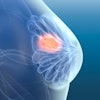Monday, December 2 | 11:30 a.m.-11:40 a.m. | VSIN21-11 | Room S404CD
Singapore researchers have found that a third-generation iPad could perform comparably to a PACS workstation for spotting large pneumothoraces. Small pneumothoraces were another matter, however.The performance of the newer-generation iPads with higher-resolution screens for interpreting plain radiographs hasn't been extensively explored in the literature, so a team from Singapore's National Neuroscience Institute wanted to evaluate the use of a third-generation iPad for viewing chest radiographs with both large and small pneumothoraces. They also sought to determine if there was a significant difference in performance between radiologists and emergency physicians.
Although past studies have found that the iPad performs well in high-contrast exams such as CT and MRI, in the Singapore study, the tablet's performance on high-spatial-resolution chest radiographs was slightly inferior to that of standard PACS monitors when detecting small pneumothoraces (defined as less than 2 cm from the chest wall). No statistically significant difference was found, however, for large, clinically significant pneumothoraces, said senior author and neuroradiologist Dr. Tchoyoson Lim.
In other findings, the researchers determined that radiologists performed better than emergency medicine physicians in detecting pneumothoraces on the iPad. The difference between the groups was statistically significant.
"Perhaps mobile emergency teleconsulting could be useful for immediate clinical management of pneumothoraces, but for subtle diagnosis, radiologists at workstations may still be valuable," Lim said.




















